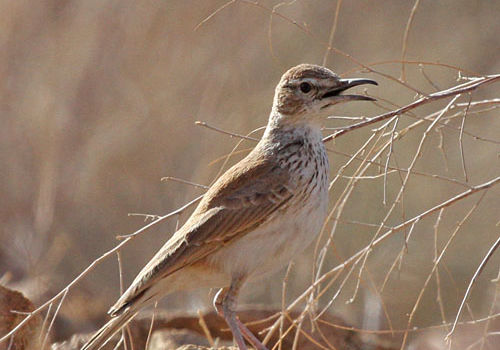
Benguela long billed lark
Certhilauda benguelensisBenguela long billed lark
Introduction: Benguela long-billed larks (Certhilauda benguelensis) are usually observed in pairs in arid and semi-arid dwarf shrubland. Stony plains and hills with grassland is another favoured habitat.
Distribution: Confined to north-west Namibia including the Namib Desert and Skeleton Coast, from Henties Bay to the Kunene River mouth.
Diet: Forages on the ground and around the base of plants to dig into soils for beetles and seeds such as the wild sesame.
Description: A large lark with a slender and decurved bill, varying from short to very long. Difficult to separate from the Karoo long-billed lark.
Breeding: A small dry grass cup is built at the base of a plant. Females lay 2 or 3 eggs from April to May.
Size: 19cm.
Weight: 50g.
Klein Windhoek

